United Arab Emirates -


Salman visits the dead cities to make a documentary film about them, those cities that were symbols of ancient civilizations, before they became cities of broken columns and stone remains. But he finds there, in the house of one of the city's elders, a painting of a wounded deer, signed by his mother, "Fatima." Soon, the owner of the house presents him with possible scenarios for his film, all of which revolve around “Fatima,” and he finds himself entering a magical world and a confusing maze as he spies on the hidden faces of his mother, realizing that he only knew one face of her. In this novel, Khairy Al-Dhahabi manipulates times and multiple voices to write about dead cities and Fatima with its many mirrors. Who is she? What is its truth? What is the secret of wishing? “If her name wasn’t Fatima”?
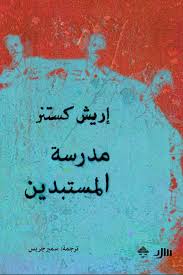
During his sermon, the president of the country violates the instructions of those around him among the regime’s seniors, which stipulate that he should not do anything or say anything other than what they had planned for him. As a result, they begin work to complete his mission and place a new look-alike in his place from among the twelve look-alikes who train them on everything related to him. The real president, but there are those who are planning a coup against this situation, so what will be his fate? In this highly contemporary and current work, the German writer recasts history to apply to many countries now, brilliantly depicting how during periods of tyranny many people turn into malleable tools, into machines and puppets. “Disobedience is a disease that leads to death in our country, a disease that is disappearing.”
By Cristina Fernandez Cubas/Translated by: Ali Ashkar

A girl enters a nunnery with a box and a wedding dress. A woman follows a homeless woman wearing a green dress through the streets of the city. A third woman’s life changes after visiting her husband’s family cemetery, and she keeps searching for herself, for a “place.” And a fourth woman is lost in a world of gray, brown, and purple faces, above which a tree floats. She survives, and a fifth woman visits Istanbul with her husband and stays in the same hotel where Agatha Christie once stayed, and the lives of the two intersect in a mysterious way. These five women are the heroines of Cristina Fernandez Cubas, who narrates a special magic that overwhelms us, seduces us, arouses our anger, and fills us with images, feelings, descriptions, and fantasies, before which we cannot be astonished, by the ability of her writer, to create a dreamy atmosphere in a unique literary style.
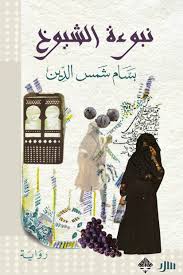
Since he found burnt bones in Tell Al-Makrab, bad luck has been accompanying Mahdi, as misfortunes continue to happen to him, as he thinks, but the head of the Egyptian excavation team has a different opinion, and that is why he seeks his help in searching for antiquities, and soon his intuition is correct, and they find the treasure. Which the ancient tales of sheikhs talk about. But bad luck intervenes again and sends his friend to prison. Will he survive? What does the ancient prophecy have to do with it? Who is the “girlfriend” that he will meet, so that each of them will change the fate of the other? With an exciting narration, Bassam Shams El-Din moves from one event to another, telling us the story of Mahdi Nasari, a poor hired hand, shedding light on the entry of the Egyptian army into Yemen, and its support for the revolution led by the Republicans against the royalists there.

They themselves Those on whom the plane threw its deadly gifts were waving to it when they were children. They pray for rain And they die of thirst. * * * You are additional scarecrows for the birds You guard the wheat And you frighten the birds that seek to sit No chrome theft! You guard the wheat My brothers But you go to sleep hungry...

Qaddour’s text takes inspiration from the idea of confession from the text “Death and the Virgin” by the Chilean writer Ariel Dorfman. Without that, the text begins to build its purely Syrian story, which revolves around an old relationship that comes back to life between an officer who was expelled by the ruling regime in peacetime and brought back in war, and “Jalal,” who was tortured in one of the days of peace. Syrian security detention centers, and among a former detainee who was tortured under the hands of the former. The two meet when their destinies intertwine through Jalal's nephew, the theater director concerned with directing the play "Death and the Virgin" in which Akram plays the role of the tortured, while the character of the tortured girl is played by "Haya, Soha Nader", Omar's lover. In the orbit of these relationships, Radwan, Hamza Hamada, the officer’s bodyguard, gets lost without knowing the horrors he will face after leaving the officer’s service to participate in the massacre of the twenty-first century.
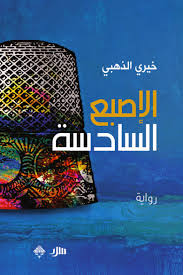
Misfortunes befall the Levant Sharif, the birth of strange children increases, drought and poverty prevail, and the attempt of Ibrahim Pasha and the apostles of the French Revolution who joined him to overthrow the state of the Ottoman Sultan is nothing but a sign of the imminent arrival of Satan, as the religious extremists see, trying to preserve the Levant Sharif, fighting the creation Newspapers and comics that encourage obscenity. All of this is happening outside, while Arwa sneaks into Bernardo’s house and messes with a strange drawing of a complete being, carrying both masculinity and femininity. In an interesting plot that combines imagination with history, myth, and folktales, Khairy Al-Dhahabi tries to read the effects of the French campaign in Syria, and monitors the return of theater to the Levant, discussing many problematic issues: myth, masculinity and femininity, and the Damascene people killing those who are gay among them.
By Group of authors. Presented by Hassan Dawoud
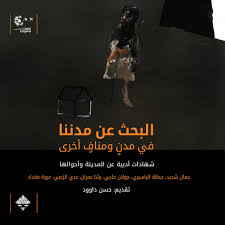
With the spread of Syrian artists and cultural practitioners around the world, it seems that the relationship with their Syrian cities, which they left or decided to remain in, remained fundamental and fundamental, but it moved to other levels of pain and hope, which alternate between the hammer of longing, nostalgia, and loss, and the anvil of anger, orphanhood, and cutting off roots. Over the past seven years, Syrians have settled in new cities. During that time, they began a journey in search of their old cities. They settled in new homes, lived and resided in them for short periods, walked on new sidewalks, or rediscovered old sidewalks, then redefined them and discovered them in new cities and headquarters. They tried to invent Damascus, Daraa, Homs, Latakia, Their Tartous, Masyaf, and Deir ez-Zor were in new cities, and they tried to draw new maps for themselves in them, and they reinvented the city between Cairo, Beirut, Istanbul, Berlin, Paris, and other cities.

He was working in a sales company to support his family, which consisted of a father, mother, and sister. He worked to pay off his father’s debts that had burdened him. He is the “good son” as long as he performs his duty to the fullest extent, and any change in this is accompanied by anger, rejection, and neglect. In his workplace, which he found himself forced to live with, the state of domination and control by the chief of staff on the one hand is clearly evident, while on the other hand, it is matched by a state of subservience and submission on his part. In fact, he has an unconscious desire to be fired from his job, but he fears for his family. From here arises a state of schizophrenia, as the two models of the cruel father and the boss represent the controlling authoritarian principle, and this is what arouses in him both submission and the spirit of rebellion. He tried to follow the rules, to be a polite boy, to be rational as his boss described him at work... and between all these honest attempts, we find him completely losing himself, and he began to experience a surprising existential crisis! Here he wakes up from his nightmares one day to find himself transformed into a disgusting “insect”!! At first glance, he thought he was still dreaming, and amid the chaos and unreasonableness of the events, he needed conclusive evidence to confirm to him the veracity of the event, and this is what he got when he found his family shocked and terrified by the horror of the event. Then he realized the reality of the event and exclaimed, saying: “No, it is not a dream.” .
By Al-Din Hashwani / Translated by: Tharaa Al-Rumi Sader
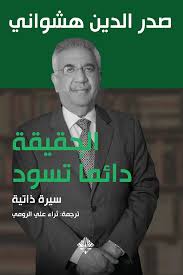
Turning adversity into successes requires great courage. This is the true message of the famous Pakistani businessman Sadruddin Hashwani, who chose Dubai as a place to manage his business, and this is one of the summaries of wisdom that we sought for the Arab reader to study through the translation of the autobiography of the great entrepreneur, in which he narrates his philosophy and his journey in the business world, which allows the reader During it, you will learn the treasure trove of success secrets, and the foundations of the path along the rugged paths to reach the highest levels of commercial and humanitarian excellence.

There are few writers who have chronicled with such honest clarity and such bold honesty the development of the soul through the stages of life. Peter Kamintsend (1904), Damian (1919), Siddhartha (1922), The Steppenwolf (1927), Narcissus and Goldmund (1930), and The Journey to the East (1932) are different versions of a spiritual autobiography, and different depictions of the path of Joan. Each new step refines the image of all previous steps, and each experience opens new worlds of exploration in a continuous effort to communicate the vision. Hermann Hesse, winner of the Nobel Prize for Literature in 1962, was closely connected to the Indian world. He was influenced by Eastern philosophies. When he was once asked about the most important influences in his life, he said that they were “the Christian and never nationalistic spirit of my parents’ house,” “reading Chinese masterpieces,” and “the personality of the historian Jacob Burckhardt.”
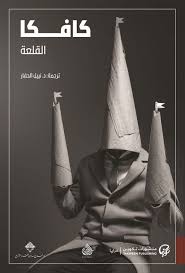
A land surveyor sent by an unknown person for some unknown purpose to the castle. The castle itself is an unknown place. It is not clear what he is supposed to accomplish there. The novel follows his repeated attempts to accomplish his work. However, he cannot move beyond the ghostly surroundings of the castle. He is never allowed to enter the castle. He also cannot return to his home. He is left alone as he faces the dualities of certainty and doubt, hope and fear, in his never-ending struggle as he moves from one maze to another.

Khalifa Al-Khader, winner of the Samir Kassir Award for Freedom of the Press 2017, writes some scenes of fear in the details of his experience in ISIS prisons in the city of Al-Bab, his escape from prison, and his subsequent return to it of his own free will after ISIS was expelled from the city. Khalifa does not tell us about ISIS from the outside. He lived in the belly of the ghoul, and went out to narrate some of what he saw, heard, and lived...

In its content, the novel deals with the story of a person who begins to wake up one day to find two men at the door telling him that he is wanted for trial, but they do not explain what case they are accusing him of. For any crime, he is interrogated, and as events develop and change, he fails to find out his crime. He and his lawyer begin to defend himself in various ways. But the difficulty they face is not knowing what his crime was
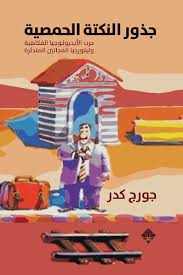
It is true that the joke has its own literature and rules in funny literature, but it is also true that it has deep roots in the lives of peoples that determine its general framework. By virtue of its targeting of a people, a sect of it, or an unknown or known person within it, it takes its general and current form, crystallized from “humorous” types. “It suits the era in which it was found, and it can be said: The general context of what is funny and what makes us sad does not change, but what changes is the mechanism of receiving them. Al-Homsi, as one of the prominent figures in contemporary humorous literature, was targeted from the beginning and labeled a fool. Indeed, Ibn al-Jawzi classified him among “the absolute fools and fools.” Accordingly, the jokes were focused on the people of Homs later. For your information, what marked the people of Homs was created by important historical events that the city experienced. Homs has fought a humorous ideological war throughout its history. This work examines the roots of the Homs joke without entering into an analysis of the jokes told about the people of Homs, except what is necessary to point out.

Enter your address and we will specify the offer for your area.